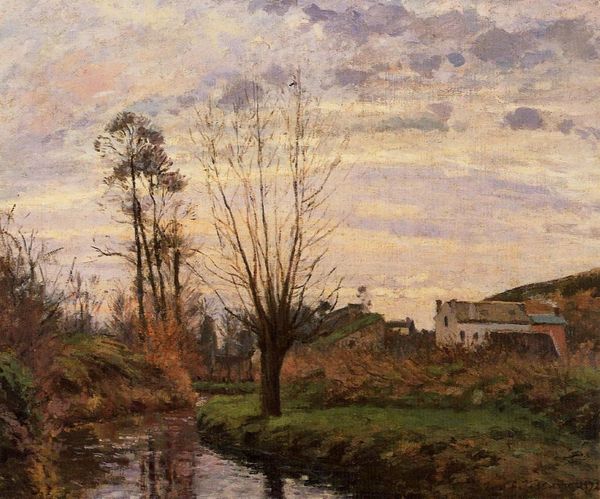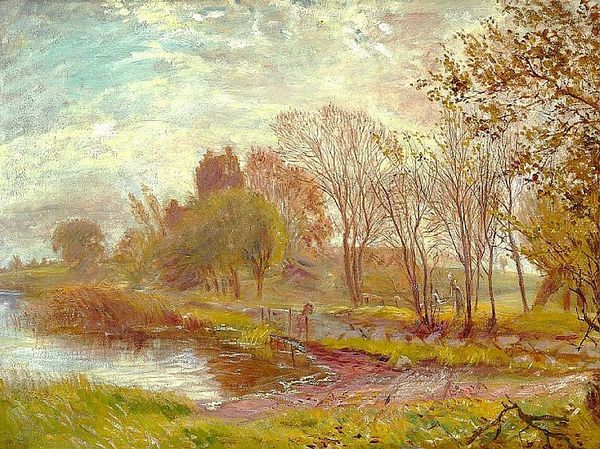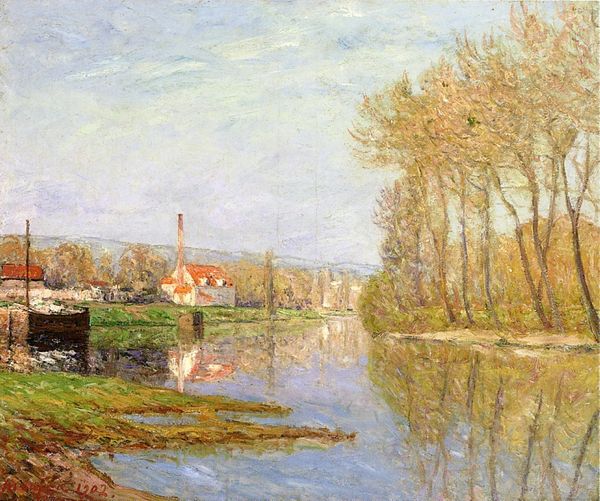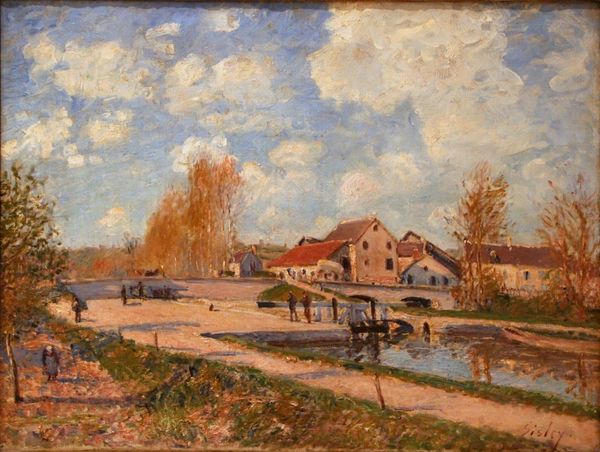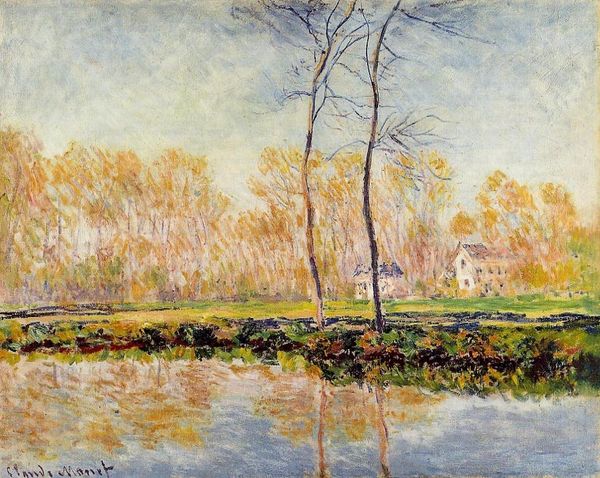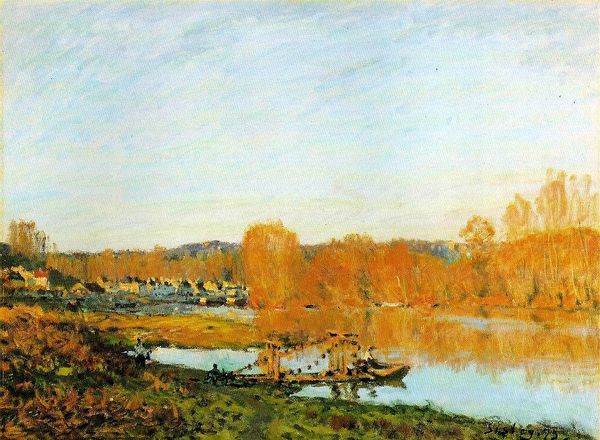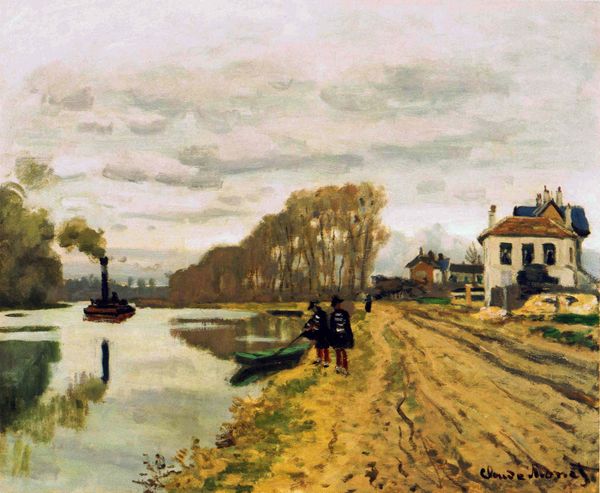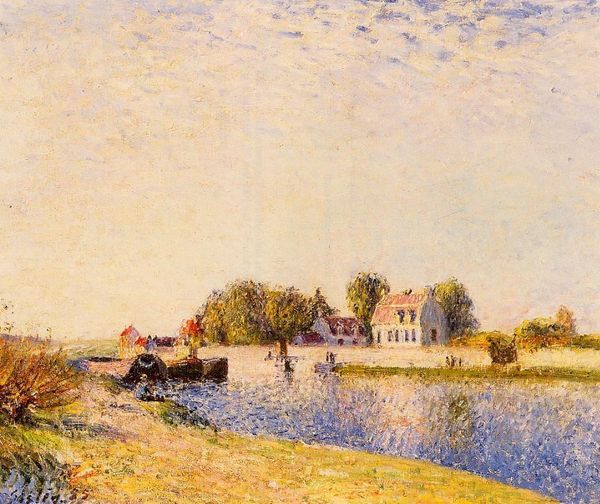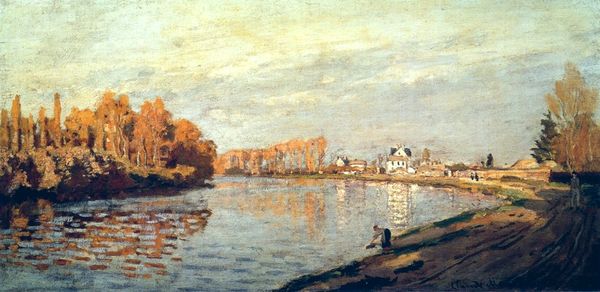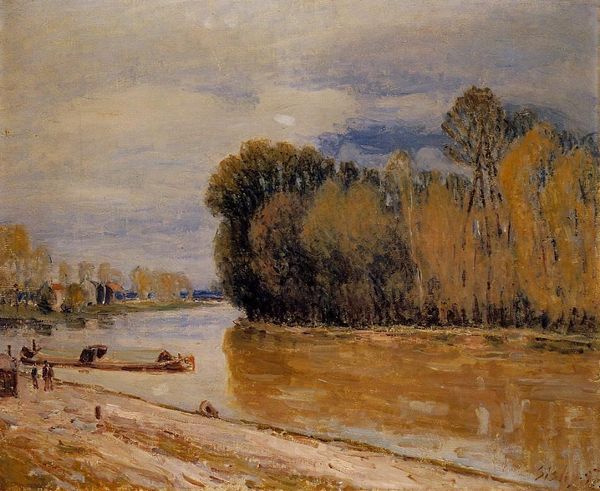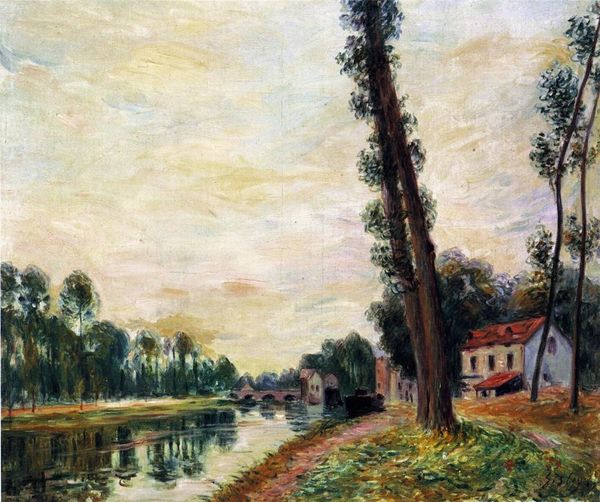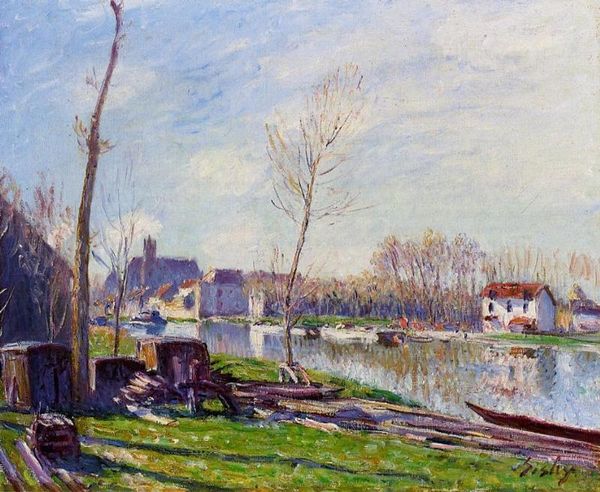
plein-air, oil-paint
#
tree
#
sky
#
impressionism
#
impressionist painting style
#
plein-air
#
oil-paint
#
landscape
#
river
#
impressionist landscape
#
oil painting
#
seascape
#
water
#
cityscape
Copyright: Public domain
Editor: Here we have Claude Monet's "Argenteuil, Seen from the Small Arm of the Seine," painted in 1872, presumably *en plein air*. I'm immediately struck by how tranquil it feels, but I also wonder about what was happening historically during its creation. How do you interpret this work within its social and cultural context? Curator: Good question. Beyond the serene surface, it's important to remember that this was painted shortly after the Franco-Prussian War. France was rebuilding, both physically and in its national identity. Consider the implications of choosing a leisure scene as subject matter rather than battlefields or ruins, as many other artists would have. Editor: That's interesting, I hadn't considered that. Was this painting a reflection of a desire for normalcy, or perhaps even a form of patriotic expression in its focus on the beauty of the French landscape? Curator: Exactly. The burgeoning Impressionist movement focused on capturing fleeting moments and sensory experiences, an optimistic move away from history painting which dominated artistic institutions. Think about the public's hunger for beauty, for respite from the recent trauma. It's also interesting that the rise of impressionism coincides with that shift in public attitude toward art. What role do you think institutions and the art market played in shaping this new art and its reception? Editor: It sounds like this wasn't just art for art's sake. It became entwined with rebuilding France's sense of self. Curator: Precisely. Monet isn’t just painting a pretty picture; he's subtly participating in the larger cultural project of redefining France, a focus on nature, light, and a revitalized national identity. This helps explain its enduring appeal. What did you learn, ultimately? Editor: That art often serves multiple purposes at once. A landscape is more than just a landscape; it’s a reflection of societal values, and that’s really expanded how I view Monet today.
Comments
No comments
Be the first to comment and join the conversation on the ultimate creative platform.
